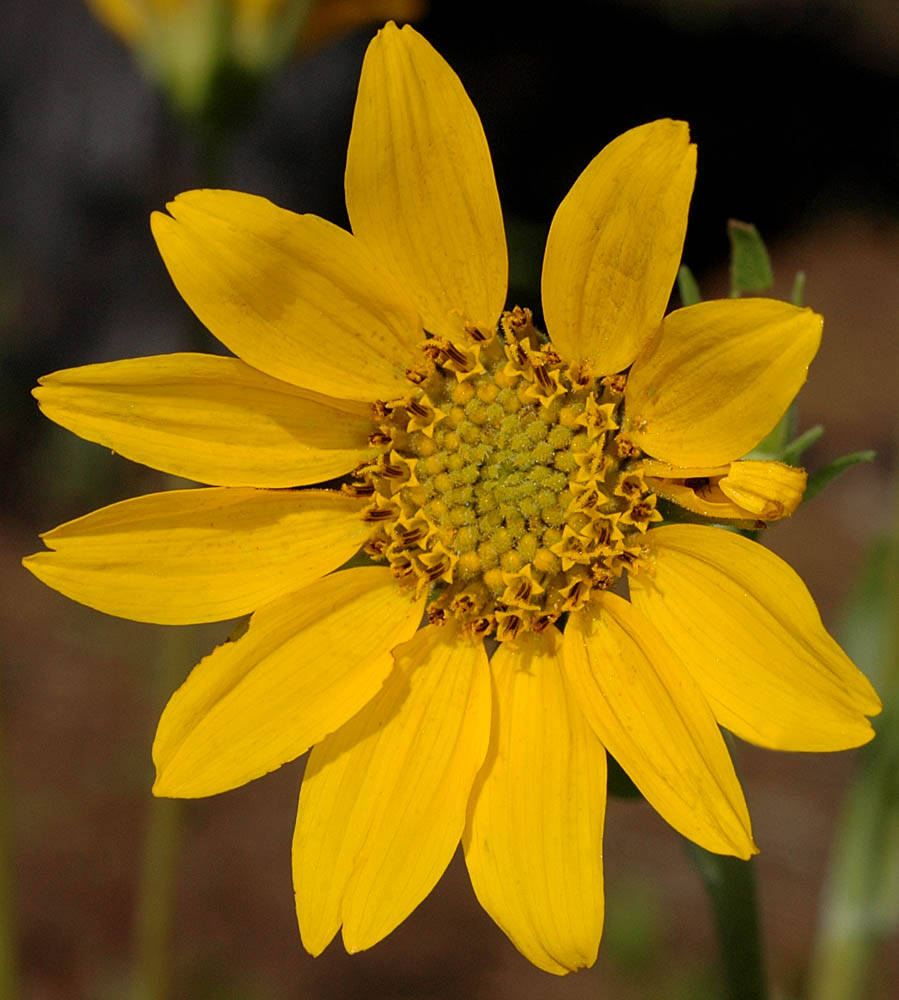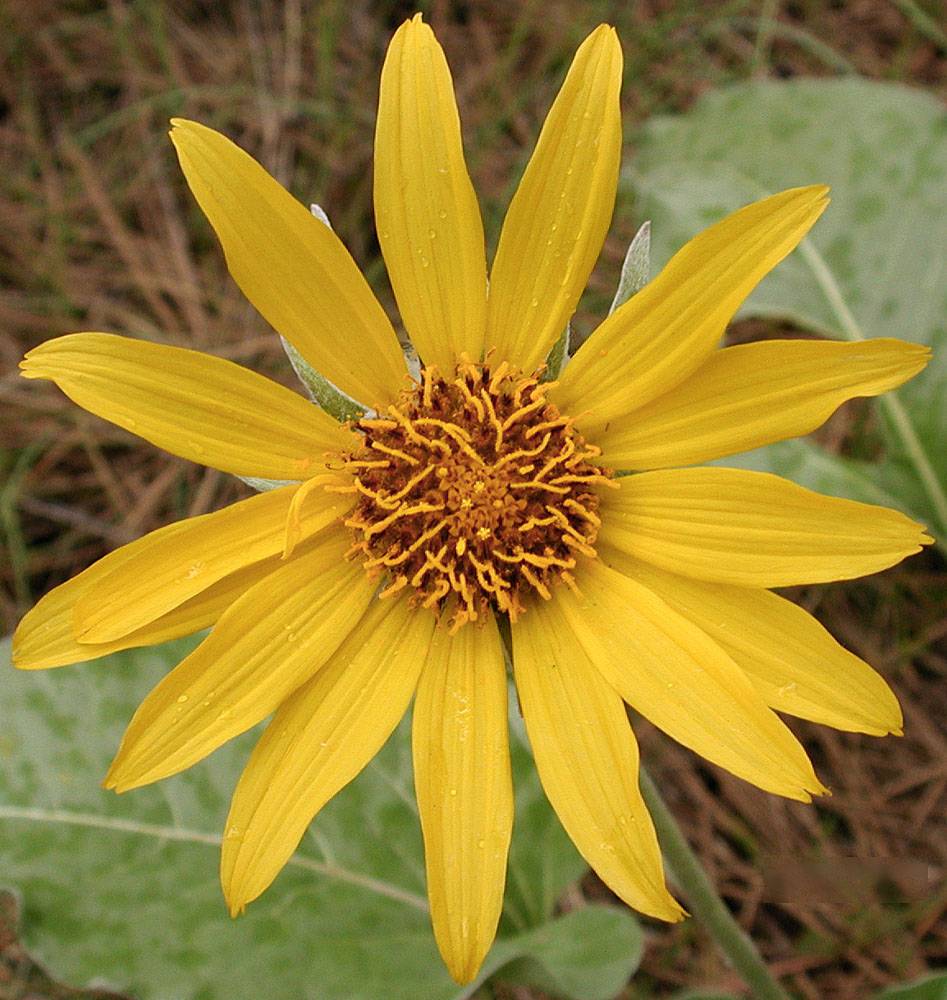Balsamorhiza careyana
Balsamorhiza sagittata
Carey's balsamroot
arrowleaf balsamroot
forming clumps, 23–62 cm, green, sparsely villous-hirsute; more densely so below heads.
forming clumps, 20–65 cm, gray-tomentose.
simple;
margins entire to slightly crenate;
surfaces hirsutulous to hirsute;
basal leaves in multiple rosettes;
blades deltate, 7–30 × 4.7–16 cm, bases cordate to hastate;
petioles 7.5–36 cm;
cauline proximal pair generally opposite, lanceolate;
distal alternate;
blades tapering at both ends, 2.5–8.2 × 0.4–2.8 cm;
petioles 0–7.5 cm.
simple; ovate, bases cordate or sagittate;
margins entire;
surfaces tomentose; more densely so abaxially than adaxially;
basal leaves in multiple rosettes;
blades 7–27 × 4.5–14.5 cm;
petioles 8–39 cm;
cauline blades 3–5.5 × 0.5–0.9 cm;
petioles 0.7–5.5 cm.
with 1 larger; terminal head and 1–6 smaller; axillary heads;
peduncles 0–20.5 cm.
with 1 larger; terminal head; and rarely 1–3 smaller; axillary peduncles 0.2–13 cm.
terminal 9–15 × 15–25 mm; axillary 9–13 × 6–12 mm.
terminal 10–15 × (10)15–30 mm; axillary 8 × 8–12 mm.
8–20 on large heads, 5–9 on small heads, yellow, persistent after drying;
rays 18–26 × 5–11 mm.
8–19 on large heads, 5–9 on small heads, yellow;
rays 25–40 × 7–18 mm.
6.5–8.5 mm.
6–8 mm.
ovate-lanceolate, 8–34 × 4–7 mm; outer often tapered to caudate or with acuminate tips, villous to tomentose.
lanceolate, 10–32 × 3–7 mm; outer often longer, densely tomentose, especially basally.
5.5–7.5 × 2–2.5 mm, generally strigillose, sometimes glabrous.
6–7 × 1.2–2 mm, glabrous.
11–13 mm.
9–11 mm.
=38.
=38.
Balsamorhiza careyana
Balsamorhiza sagittata
Open areas, open pine woodlands. Flowering Apr–Jul. 0–1300 m. BW, Casc, Col, ECas, Lava. WA. Native.
Balsamorhiza careyana usually grows east of the Cascades but intergrades broadly with B. deltoidea in the Cascades and along the Columbia River. Pure B. careyana is easily distinguished by a combination of strigillose fruit, ray florets that are persistent after drying, and generally more heads per stem than B. deltoidea. Cascade specimens can be difficult to determine and have been separated as B. careyana var. intermedia in other treatments. The two species should perhaps be considered varieties of the same species.
Open areas, edges of forests, open woodlands. Flowering Apr–Jul. 300–2100 m. BR, BW, Col, ECas, Owy. CA, ID, NV, WA; north to British Columbia, northeast to Alberta, east to SD, southeast to AZ. Native.
This is the most widespread species of Balsamorhiza. It hybridizes with every species of section Balsamorhiza with which its range overlaps but is itself morphologically quite uniform and easy to distinguish from the other members of section Artorhiza. Its hybrids with B. incana have been given the name B. × tomentosa.
Abigail (Abby) Moore
Abigail (Abby) Moore
- Local floras:
BC,
CA,
OR,
WA
- Local Web sites:
CalFlora,
CalPhotos,
Flora NW,
PNW Herbaria,
Turner Photog.
WildflowerSearch
iNaturalist (observations)
USDA Plants Database
- LBJ Wildflower Center
- SEINet
- Plants of the World Online
- Encyclopedia of Life
- Wikipedia
- Google Image Search





